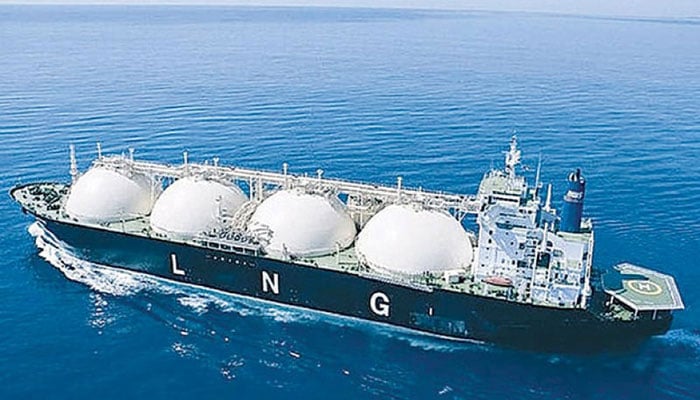Caretakers in a fix on charging domestic consumers for costly RLNG
If govt bears cost of RLNG injection then it would increase circular debt by Rs200 billion, says Energy ministry official
October 03, 2023

- Currently, tariffs for residential consumers are based on local gas.
- IMF is pushing govt to charge full RLNG prices to all consumers.
- Caretaker govt plans to import additional cargos to meet demand.
ISLAMABAD: With the expectations of a high gas demand during the winters, the caretaker government is in a fix on whether it should divert costly RLNG to the domestic sector and add to the circular debt, reported The News on Tuesday.
A senior Energy Ministry official, who spoke to the publication on the condition of anonymity, said that if the government bears the cost of that the RLNG injection then it would increase circular debt by Rs200 billion.
Though Pakistan LNG Limited (PLL) has sought bids for two spot LNG cargoes to be delivered on December 7-8 and 13-14, the purchase depends on bids’ price. The bids would be opened on October 4.
The PLL may also seek bids for two more spot cargoes for the month of January 2024.
So far, the RLNG worth Rs248 billion has been injected into the domestic sector from 2018 up till now, but there has been no recovery because it is difficult to recover the cost from domestic consumers.
As per The News, tariffs for residential consumers are based on local gas and not the ones which are imported. In such a situation, if RLNG is supplied to the residential sector for four months during the winters then another Rs200 billion would be added to the circular debt.
The International Monetary Fund (IMF) is pushing the government to charge full RLNG prices to all consumers to put an end to the build-up of circular debt in the gas sector.
The IMF review talks are likely to be undertaken at October end.
“The gas sector has already become unsustainable in the wake of the circular debt that has so far swooped up to Rs2,900 billion,” the official told The News.
Pakistan is, the official said, currently getting RLNG supply from abroad under term agreements which include 5 cargoes from Qatar at 13.37% of Brent, 3 cargoes again from Qatar at 10.2% of Brent, and one from ENI at 12.14% of Brent. So 900 mmcfd of imported gas is not enough to cater to the increasing demand for gas in December.
“This fact has prompted the caretaker regime to import two cargos from the open market which will jack up the imported gas to 1100 mmcfd from 900 mmcfd,” revealed the official.
The local gas production has reduced to 3.2bcfd and it is decreasing by 9-10% every year. This summer season gas was not available to the domestic sector for more than eight hours as it was made available in the morning for three hours from 6am to 9am, at noon, it was available for two hours from 12 noon-2 pm and in the evening it was available for three hours from 6 pm to 9 pm.
Keeping in view the dwindling local gas production, the local gas is to be available for 6 hours a day only — two hours each for the morning, afternoon, and evening cooking times. If the government decided to maintain the gas availability at 8-9 hours, then it would have no option but to divert the RLNG to the domestic sector.
The official said that the Sui Southern may have a maximum gas of 725 mmcfd in its system and Sui Northern 820 mmcfd. The power sector, however, has reduced its demand for electricity generation as power consumption in the winter season tumbles to 10,000 MW across the country. The power sector has reduced its demand to 200 mmcfd for November, 250 for December, 350 mmcfd for January 2024, and 150 mmcfd for February 2024.
Meanwhile, the Sui Northern Gas Pipelines Limited (SNGPL) says that it will start distributing RLNG supply to domestic consumers in Punjab, Khyber Pakhtunkhwa, and northern areas during the winter season from mid-October till March.



